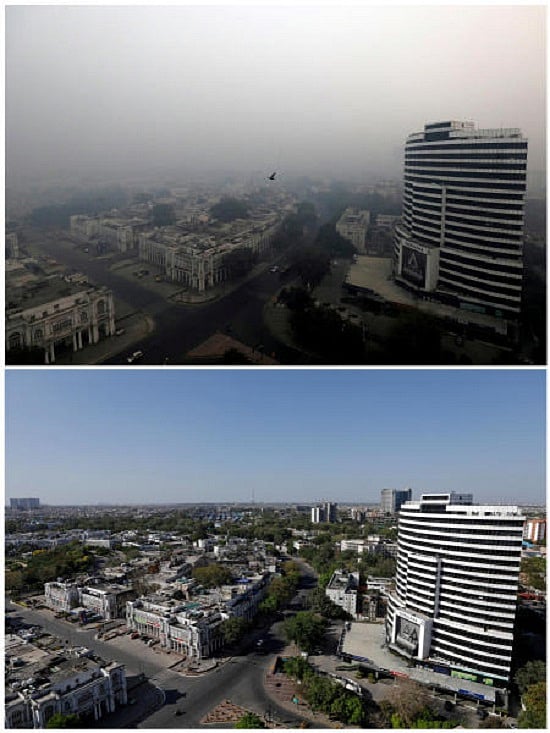
Air pollution in India is at its lowest in two decades, says a study published by US space agency National Aeronautics and Space Administration (NASA).
The decrease in aerosol levels was observed after just a week of reduced human activity and the data presents a 20-year low in aerosol levels for this time of year in northern India.
The research conducted by Universities Space Research Association's (USRA's) Pawan Gupta and the NASA team at Marshall Space Flight Center showed aerosol particles plummeting over northern India because of decreased activities resulting from COVID-19.
The NASA Satellite data shows a significant decrease in aerosol levels across northern India, a USRA press statement said. Every year, aerosols from anthropogenic (human-made) sources contribute to unhealthy levels of air pollution in many cities.
Aerosols are tiny solid and liquid particles suspended in the air that reduce visibility and can damage the human lungs and heart. Some aerosols have natural sources, such as dust storms, volcanic eruptions, and forest fires. Others come from human activities, such as the burning of fossil fuels and croplands. Human-made aerosols tend to contribute most of the smaller particles that have greater potential for damaging human health.
“We knew we would see changes in atmospheric composition in many places during the lockdown,” said Gupta. “But I have never seen aerosol values so low in the Indo-Gangetic Plain at this time of year.”
The first five maps above show aerosol optical depth (AOD) measurements over India during the same March 31 to April 5 period for each year from 2016 through 2020. The sixth map (anomaly) shows how AOD in 2020 compared to the average for 2016-2019. Aerosol optical depth is a measure of how light is absorbed or reflected by airborne particles as it travels through the atmosphere. If aerosols are concentrated near the surface, an optical depth of 1 or above indicates very hazy conditions. An optical depth, or thickness, of less than 0.1 over the entire atmospheric vertical column is considered “clean.”
The data was retrieved by the Moderate Resolution Imaging Spectroradiometer (MODIS) on NASA’s Terra satellite.
In a typical early spring in the Ganges Valley of northern India, human activities generate the majority of aerosols. Motor vehicles, coal-fired power plants, and other industrial sources around urban areas produce nitrates and sulfates; coal combustion also produces soot and other carbon-rich particles. Rural areas add smoke—rich in black carbon and organic carbon—from cooking and heating stoves and from prescribed burns on farms (though farming fires more often occur at other times of the year). By all accounts, the 2020 lockdown reduced those human-made emission sources.
Scientists expect aerosol levels to increase slightly in upcoming weeks in parts of India as seasonal dust storms begin. Dust concentrations are typically low in March and early April before temperatures rise and strong westerly winds blow sand in from the Thar Desert and Arabian Peninsula. The question is whether overall AOD will remain below normal.
